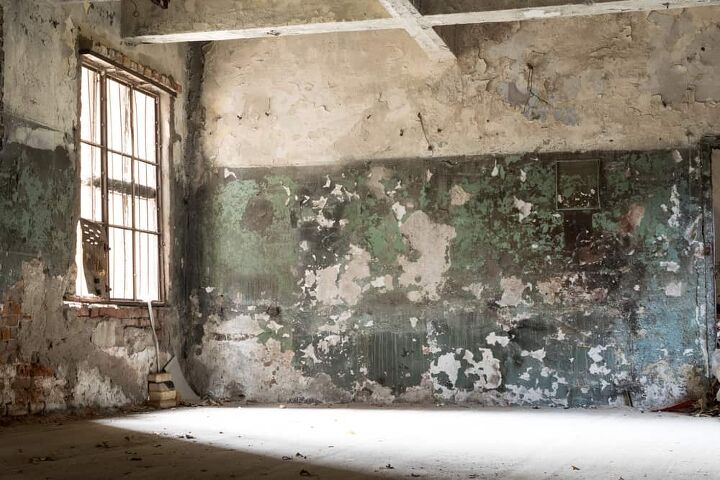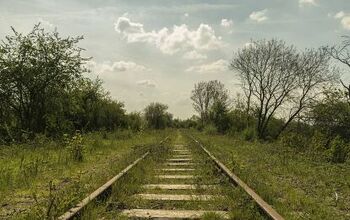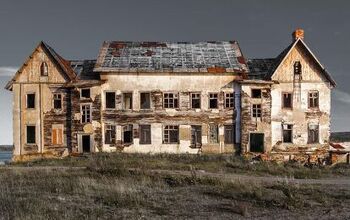Top 6 Abandoned Places In San Diego

When people think of places that are abandoned, they generally don’t think of cities where the rent is through the roof. I mean, who would, right? Believe it or not, San Diego has a serious issue with abandoned places. For real estate investors and house hunters, this is bad. Kind. For people who like checking out urban scenes, it’s great. But, where can you go in San Diego?
The Lopez House, Marshall Scottie’s, Horton’s Plaza Mall, and Goat Canyon Plaza are among the top abandoned places in San Diego. Places like the Old California Theater and the Chargers Facility are long abandoned and unique destinations in San Diego.
San Diego’s Cali vibes are always awesome, especially when you are ready to urbex. This guide will focus on some of the more interesting abandoned places we heard about.
Funky Fascinating Abandoned Places In San Diego
Taking a trip to this sunny Cali city? Want to know how you can make the most of your time in the urbex scene? Check out these cool places below.
1. The Lopez House
The Lopez House is one of those places that you often need to know someone if you want to find it. This once was the homestead of a man known as Ignacio Lopez back in the 1840s. Lopez was the kind of man who had a star in his eye and wanted to go places. He built Casa de Lopez, which is currently a historic site. He was elected to public office and took part in the rebellion at Presidio.
Saying he was an adventurer was an understatement. He then made his own homestead, an 800-square foot wooden home here in San Diego. The home stayed in the Lopez family until Ramon Lopez’s death in 1953. The home was very fragile by the time it was abandoned, and it had all but blown away in the wind by the 1960s.
All that’s left is a pretty slab that says “Ramon Lopez” and “JFC” on it. Nearby is an orchard that the Lopez family planted in the 1890s. It’s a forlorn area.
2. Marshall Scottie’s
The spelling of this place might’ve gotten lost to time. Some call it Marshall Scottie’s, others call it Marshall Scotty’s. Either way, the tale remains the same. At one point, Scottie’s was the hot amusement park for people who wanted affordable family fun. It had a tilt-a-whirl, cool events, as well as the largest water slide of its kind for the area. The water park was a highly ambitious project.
The park opened in 1989 and cost a highly impressive $500,000. The concept worked well, but not well enough. Due to all the other attractions in the area, poor marketing, and a slew of unexpected costs, the waterpark didn’t make it. By the mid-1990s, the park had shuttered.
Since then, the park hasn’t been occupied…aside from the people who have decided to tag it with graffiti.
3. Horton Plaza Mall
Vaporwave fans, unite. Or something. This is the story of a dead mall that somehow managed to happen in the middle of one of the busiest cities in America. Like many malls in the area, the Horton Plaza Mall was started as a quick and easy way to get all your retail needs met. The vast, 5-story mall was part entertainment center, part shopping.
The city of San Diego greenlit the large, mazelike project in Downtown San Diego as a way to revitalize the ailing portion of the city. For a while, it worked. The whimsical mall brought people by the hundreds, if only to enjoy the M.C. Escher-esque architecture. However, things didn’t really work out long-term.
Online shopping took a large chunk of the profits. The rent became too high to afford, even for well-to-do retailers. The rough neighborhood didn’t help, either. Fights broke out and at least two people have died on the mall’s premises. By 2020’s pandemic, the mall announced its closure. It’s now abandoned.
4. Goat Canyon Trestle
It’s no secret that the United States used to have a lot more trains than it now does. In San Diego, there was a massive train network that carried passengers virtually everywhere. Such was the case with the Carizzo Gorge Railroad, one of the most difficult railroads ever made. It took 12 years and millions of dollars when it was made in 1919.
The train took several tunnels and a massive bridge to run. Unfortunately, after an earthquake destroyed the tunnels, the train was no longer able to be used in certain areas. In 1976, a massive hurricane struck the area and wiped out other branches of the train. Eventually, the government decided to discontinue that portion of the rail.
So, what happened? The trains were left exactly where they were: right on the tracks. These days, people visit the trains and even camp in them. That brings a new meaning to the term “Wild West.” Be forewarned, this is a 12-mile long hike!
5. Old California Theater
California has a way with theaters that most other places don’t. The theaters here have a magic to them that most others don’t, often due to the old world yet Western architecture. This is why this story breaks our hearts a little. When it was first erected in 1927, builders invested $320,000 to create a place for people to enjoy both vaudeville and movies. It was done up in the old Victorian style that suggested elegance.
The theater became a mainstay of San Diego’s culture, but as we all know, the movie industry was quickly fading. By the 1970s, people wanted to go to the big multiplexes and chains that began to dominate the country. The waning profits meant that maintaining the theater became a major task.
Eventually, the theater couldn’t sustain itself. The doors closed in 1990 and the Old California Theater was no more. It began to decay, and it’s still abandoned. While it is abandoned right now, there are some plans that are underway. The local historical society raised enough funds to try to preserve it. So, it’s saved from complete demolition.
However, there is a catch. When the California Theater was made, it was made with asbestos. This means that the current theater is not capable of being refurbished. It’s too far gone and restoring it would put both workers and moviegoers at risk of cancer. They will be demolishing the area then using parts of the old theater to make the re-creation of it.
6. The Chargers Facility
The San Diego Chargers were a major sports team that became a major part of San Diego’s culture. The NFL team was headquartered at Qualcomm Stadium, a $76.6 million stadium that was there for home games and throwing the ball. (Or whatever they’re paid to do, I don’t know sports that well.) Regardless, they had sports things there and the Chargers were a major sports icon in San Diego.
Unfortunately for the city, the Chargers didn’t stay in San Francisco. The city of Los Angeles picked them up as a major main team, and after heavy debating, they moved there. This didn’t bode well for the city of San Diego. Along with losing the tourism that came with the Chargers, the city also was saddled with millions in debt as a result of the stadium they built for the Chargers.
There wasn’t much anyone could do for the stadium. There were no sports teams willing to play there, nor was it even fiscally feasible to get new games playing. With the Chargers gone, the only thing they could do is close the door to the arena. The Chargers left the city in the early 2010’s, leaving a massive debt in their wake.
Despite it being abandoned for over 10 years, the Chargers headquarters remains relatively intact. The area still has lawn sprinklers that work, and the electricity has not been completely shut off. Currently, there are some rumors that the city might refurbish the area. However, they’re just that: rumors.
Related Questions
What is the abandoned San Digo mall going to turn into?
The Horton Plaza Mall has been greenlit for demolition as of 2020, though demolition appears to be delayed due to the pandemic. According to the most recent updates, the mall’s grounds will be used to create a state-of-the-art tech hub. The concept behind this is slated to go underway within the next two to three years.
Where can you find abandoned buildings in San Diego for sale?
Good question! Honestly, it’s not easy in this city since development is happening at a breakneck speed. The best way to do it in this town is to drive through San Francisco and check out abandoned buildings. If you have a lot of money, you can also ask the local historical preservation society about the current fate of certain buildings and possibly refurbish it yourself.If you are willing to deal with the bidding war, then you also can look into foreclosure auctions. These features abandoned property that were given back to banks. They may not be as iconic as the properties we mentioned, but they are still cheaper than usual.
Will the Chargers ever come back to San Diego?
Seeing your favorite sports team leave your hometown must be rough, but there’s a lot to be said about this area. While fans have regularly begged for them back, the truth is that the Chargers do not seem to want to move out of Los Angeles anytime soon. If they do move back, it would have to be at a premium price, under new ownership.

Ossiana Tepfenhart is an expert writer, focusing on interior design and general home tips. Writing is her life, and it's what she does best. Her interests include art and real estate investments.
More by Ossiana Tepfenhart



























